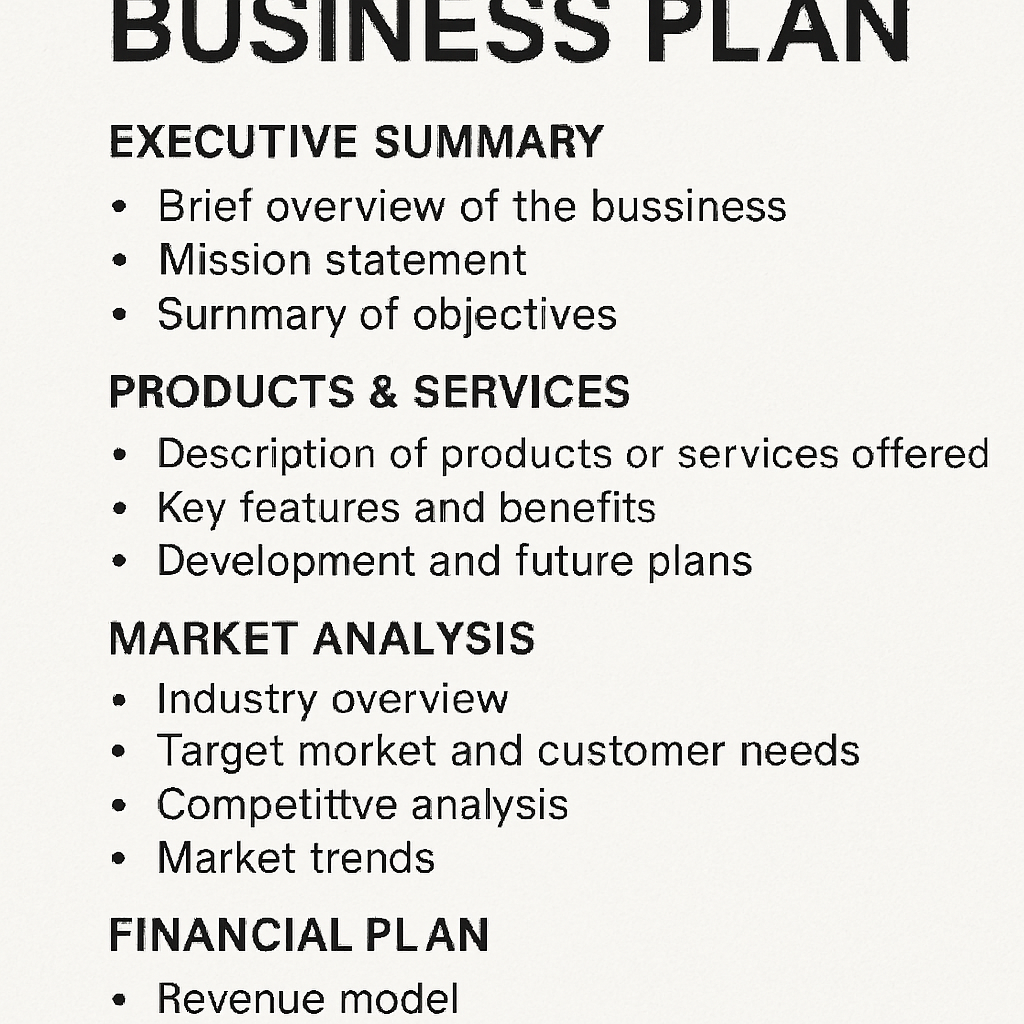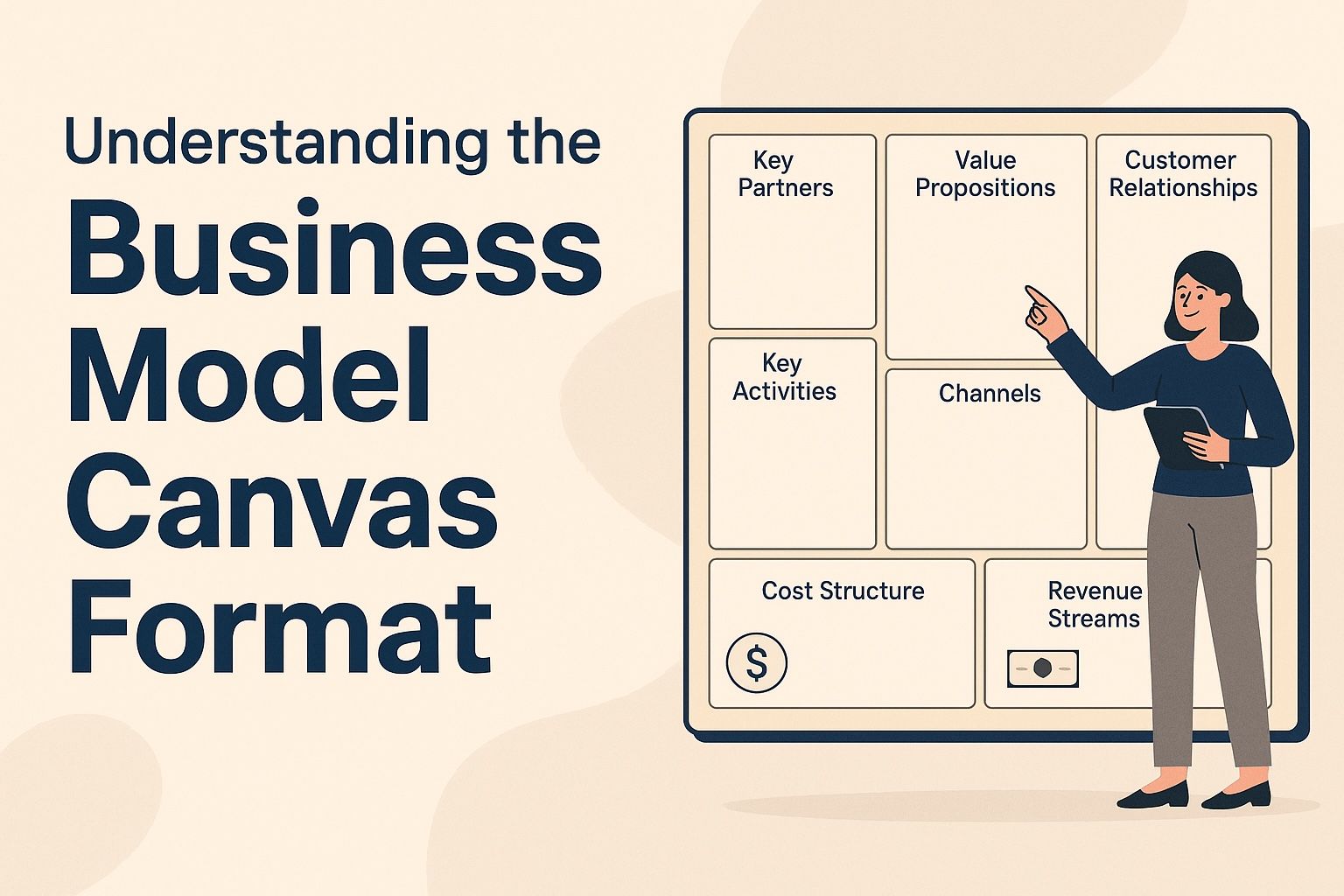Key Elements to Include in Your Business Plan
A business plan is a formal document that outlines the goals of your business and the strategy you will use to achieve them. It includes details about your company, market analysis, organizational structure, marketing strategies, and financial projections. Essentially, it is the blueprint of your business, providing a detailed explanation of how you plan to turn your ideas into a successful venture.
Defining the Business Blueprint
A business plan serves as the foundational blueprint for your company, detailing every facet from inception to potential growth strategies. It provides clarity and direction, ensuring every stakeholder understands the business's vision and objectives. By defining this blueprint, you set clear goals, making it easier to measure progress and success.
The Purpose and Importance
Understanding the purpose of a business plan is crucial. It not only helps in setting a clear direction but also acts as a communication tool for potential investors and stakeholders. A well-crafted plan demonstrates your commitment, providing assurance to investors about the viability of your business model. The importance of a business plan extends to risk management, helping you anticipate potential obstacles and devise strategies to overcome them.
Key Components Explained
The key components of a business plan include the executive summary, market analysis, and financial projections, among others. Each section plays a pivotal role in showcasing different aspects of your business, from the core concept to the financial health. Understanding these components ensures that your plan is comprehensive and addresses all necessary areas of business operation.
Essential Parts of a Business Plan
To create a solid business plan, you need to include several core components. Let's explore each part in more detail.
1. Executive Summary
The executive summary is the first section of your business plan, but it's often written last. It provides a brief overview of your business and highlights the key points of your plan. This section should capture the reader's attention and entice them to read further. Include your business name, location, products or services, mission statement, and the purpose of your plan.
Crafting a Compelling Overview
The executive summary is your first chance to make a strong impression. It should succinctly convey the essence of your business, capturing the reader's interest immediately. A compelling overview includes the business’s vision, mission, and the unique value proposition that sets it apart from competitors.
Highlighting Key Points
In this section, highlight the most critical aspects of your business plan. This might include your target market, financial objectives, and growth strategy. By emphasizing these key points, you provide a snapshot that intrigues and informs potential investors or partners about the business's potential.
Ensuring Clarity and Brevity
While the executive summary is comprehensive, it must also be concise. Aim for brevity without sacrificing clarity, ensuring that every sentence adds value and insight. This balance is crucial to maintain the reader's engagement and interest in your business proposal.
2. Business Description
This section offers a detailed description of your business. Explain what your company does, the industry it operates in, and your business goals. Describe the problems your business will solve and why it is uniquely positioned to succeed. Highlight your business's strengths and any competitive advantages you have.
Explaining Your Business Concept
Begin by clearly articulating the core concept of your business. What products or services do you offer, and how do they fit into the larger industry? This explanation should provide a clear understanding of what your company is all about and its primary objectives.
Identifying Industry Positioning
Positioning within the industry is crucial for strategic planning. Explain where your business fits within the market landscape, identifying your niche and competitive advantage. This positioning highlights your understanding of market dynamics and your place within it.
Highlighting Unique Selling Points
Your business's unique selling points (USPs) differentiate you from the competition. Clearly articulate these USPs, focusing on what makes your business stand out. This might include innovative products, exceptional service, or a distinctive brand identity that resonates with your target audience.
3. Market Analysis
Conducting a thorough market analysis is essential for understanding your industry and target market. This section should detail the size of your market, current trends, and growth potential. Identify your target customers and describe their characteristics. Analyze your competitors, noting their strengths and weaknesses, and explain how your business will position itself in the market.
Researching Market Trends
Market trends provide insight into industry growth, potential opportunities, and emerging challenges. Conduct thorough research to identify these trends, understanding how they impact your business. This analysis should guide your strategic decisions, ensuring your business remains relevant and competitive.
Understanding Target Customers
Identifying and understanding your target customers is critical for effective marketing and product development. Define their demographics, preferences, and buying behaviors, tailoring your strategies to meet their needs. This understanding allows you to create targeted marketing campaigns that resonate with your audience.
Analyzing Competitive Landscape
Competitive analysis involves examining your competitors' strengths and weaknesses. Identify their market share, pricing strategies, and customer base, using this information to inform your positioning and strategy. A thorough analysis enables you to identify gaps in the market and capitalize on them effectively.
4. Organization and Management
Outline your business's organizational structure and introduce your management team. Describe the roles and responsibilities of each team member and highlight their qualifications and experience. If you have a board of directors or advisors, include their profiles as well. This section should demonstrate that your team has the expertise to execute your business plan successfully.
Structuring the Organization
The organizational structure defines how your business operates and makes decisions. Clearly outline the hierarchy, roles, and responsibilities within the company. This structure ensures clarity and efficiency, facilitating smooth operation and growth.
Introducing the Management Team
Your management team plays a vital role in executing the business plan. Introduce each member, highlighting their experience, expertise, and contributions to the business. A strong management team adds credibility and instills confidence in potential investors.
Detailing Roles and Responsibilities
Clearly define the roles and responsibilities within your organization. This clarity ensures that every team member understands their duties and how they contribute to the business's success. A well-defined structure helps in achieving organizational goals efficiently.
5. Products or Services
In this section, describe the products or services your business offers. Explain how they meet the needs of your target market and what sets them apart from competitors. Include information about the product lifecycle, research and development activities, and any intellectual property, such as patents or trademarks.
Describing Product Offerings
Provide detailed descriptions of your products or services, focusing on their features and benefits. Explain how they solve customer problems or fulfill their needs. This description should be clear and compelling, showcasing the value your offerings bring to the market.
Highlighting Differentiation
Differentiation is key to standing out in a crowded market. Highlight what makes your products or services unique, whether it's innovation, quality, or price. This differentiation should be a core part of your marketing strategy, communicating why customers should choose your business over competitors.
Addressing Intellectual Property
If applicable, discuss any intellectual property, such as patents or trademarks, that protect your products or services. This protection can be a significant competitive advantage, safeguarding your innovations and reinforcing your market position. Highlighting this aspect can enhance your business's value proposition to investors.
6. Marketing and Sales Strategy
Detail how you plan to attract and retain customers. Outline your marketing strategy, including pricing, promotion, and distribution channels. Describe your sales strategy, including sales tactics and sales process. Explain how you will measure the effectiveness of your marketing and sales efforts and any adjustments you plan to make over time.
Developing a Marketing Strategy
A well-thought-out marketing strategy is essential for reaching your target audience. Outline your approach to pricing, promotion, and distribution, ensuring each element aligns with your business goals. This strategy should be adaptable, allowing for adjustments based on market feedback and changes.
Crafting a Sales Process
Define your sales process, detailing each stage from lead generation to closing the deal. This process should be efficient and customer-centric, focusing on building relationships and providing value. A clear sales strategy helps in converting prospects into loyal customers.
Measuring and Adjusting
Regularly measure the effectiveness of your marketing and sales efforts using key performance indicators (KPIs). These metrics provide insight into what's working and what needs improvement. Be prepared to make adjustments as needed, ensuring your strategies remain effective and aligned with business objectives.
7. Funding Request
If you are seeking funding, include a section outlining your financial needs. Specify how much funding you require, how you will use the funds, and the type of financing you are seeking, such as loans or investments. Be clear about the terms you are offering and how you plan to repay any loans or provide a return on investment.
Specifying Financial Needs
Clearly define the financial requirements of your business, detailing how much funding is needed and for what purposes. This clarity helps investors understand your needs and how their money will be used to grow the business. Be specific about the allocation of funds, from operational costs to marketing budgets.
Exploring Funding Options
Explore different funding options, such as loans, equity investments, or grants, and determine which best suits your business model. Each option has its pros and cons, and understanding these helps in making informed decisions. Clearly articulate your preferred funding method and the rationale behind it.
Offering Terms and Returns
Be transparent about the terms of any funding or investment, including repayment plans or equity stakes. Clearly outline how investors can expect to see a return on their investment. This transparency builds trust and confidence, crucial for securing the necessary financial backing.
8. Financial Projections
by Morgan Housel (https://unsplash.com/@morganhousel)
Provide detailed financial projections for your business, typically covering the next three to five years. Include income statements, cash flow statements, and balance sheets. Explain your financial assumptions and how you arrived at your projections. This section demonstrates the financial viability of your business and reassures investors of its potential profitability.
Creating Financial Statements
Develop comprehensive financial statements, including income statements, balance sheets, and cash flow statements. These documents provide a clear picture of your business's financial health and future potential. Accurate and realistic financial projections are essential for gaining investor confidence.
Explaining Assumptions
Clearly explain the assumptions behind your financial projections, such as expected sales growth or cost reductions. These assumptions should be realistic and based on thorough market research and analysis. Providing this context helps investors understand the reasoning behind your numbers.
Demonstrating Viability
Financial projections demonstrate the viability and potential profitability of your business. Use these projections to highlight growth opportunities and reassure investors of the business's potential success. A strong financial outlook is a key factor in attracting investment and support.
9. Appendix
The appendix contains any additional information that supports your business plan, such as resumes, permits, legal documents, and detailed market research. While this section is optional, it can provide valuable insights and evidence to back up your claims and enhance the credibility of your plan.
Including Supporting Documents
The appendix is an ideal place to include supporting documents that add credibility to your business plan. This might include resumes of key team members, legal agreements, or any other documents that substantiate your claims. These additions provide depth and context, reinforcing the strength of your proposal.
Presenting Detailed Research
Include detailed market research and analysis to support the claims made in your business plan. This research should be thorough and relevant, providing a solid foundation for your strategies and projections. Detailed research adds credibility, demonstrating your commitment and understanding of the market.
Enhancing Credibility
The appendix enhances the overall credibility of your business plan, offering additional evidence to support your assertions. This section can be crucial for building trust with potential investors, showcasing your thoroughness and attention to detail. A well-prepared appendix can make a significant difference in your plan's persuasiveness.
Conclusion
A well-crafted business plan is an indispensable tool for any business owner. It not only helps you clarify your vision and strategy but also serves as a persuasive document for attracting investors and securing funding. By including these key elements in your business plan, you will be well-prepared to navigate the challenges of entrepreneurship and set your business on the path to success. Take the time to research, write, and revise your plan, ensuring it accurately reflects your business goals and strategy. Good luck on your entrepreneurial journey!




